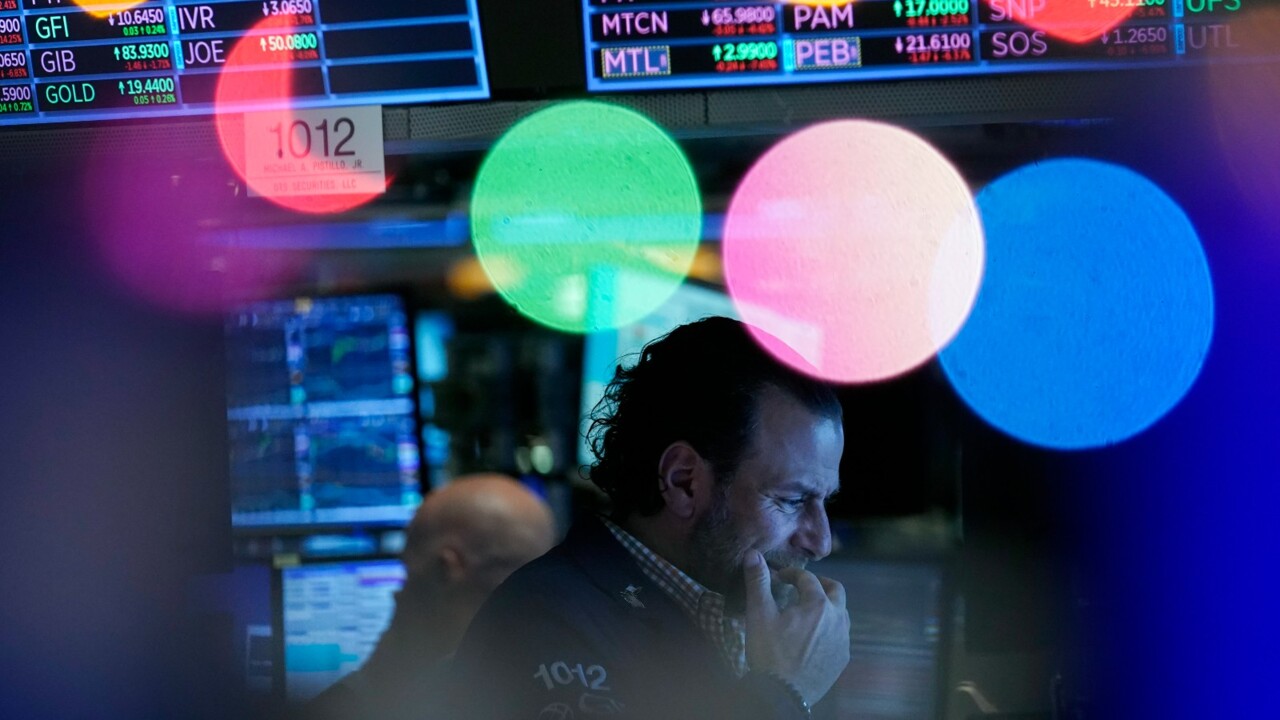Small and mid-cap rally is just getting started, says Bell Asset Management
Investing in small to mid-cap stocks is a better way to wager on US interest rate cuts and economic growth than the so-called ‘Magnificent Seven’ in the US, says Ned Bell.

Business
Don't miss out on the headlines from Business. Followed categories will be added to My News.
A long-awaited broadening out of global stockmarket performance beyond mega-cap tech which started after benign US inflation data last week is only just getting started, according to Ned Bell.
Small to mid-sized companies have been somewhat overlooked as investors piled into the so-called “Magnificent Seven” giants linked to the AI boom in recent years.
But with the Federal Reserve set to pull off a rare “soft landing”, Bell Asset Management’s chief investment officer argues that “SMID caps” are a better way to bet on US interest rate cuts and economic growth than the Magnificent Seven.
“It’s been an incredibly narrow rally and the bulk of the market has seen very little multiple expansion,” Bell says.
“SMID earnings have been pretty good, but they’ve had no love at all.”
Money flowing out of Magnificent Seven in recent days also seems to have found its way into Australia’s sharemarket. The S&P/ASX 200 rose 0.7 per cent to a record high of 8057.9 points on Wednesday. After lagging the US market this year, the S&P/ASX 200 has soared 3.1 per cent in the past five days.
The Mag 7 index led by Nvidia fell 4.2 per cent from a record high last week.
In the same period, the S&P 500 rose just 1.7 per cent and the Nasdaq 100 was flat.
But the surge in US small caps since the release of lower than expected US inflation data last week has been extraordinary. The Russell 200 small caps index has soared 12 per cent in that period, scoring its biggest outperformance versus the Nasdaq 100 tech index since 2011.

The best five-day rise in the small caps index since April 2000 came as the US 10-year bond yield fell from 4.3 per cent to a four-month low of 4.16 per cent after US CPI and PPI data last week.
“The long-awaited ‘switch’ seems to be playing out,” Bell tells The Australian.
There’s no denying the fact that Magnificent Seven earnings growth far exceeded the rest of the market in recent years. However, smaller companies with relatively less cash in the bank should benefit more from falling interest expenses than tech giants such as Apple that are flush with cash. An improving US economic outlook should also make more difference to the bottom line for smaller companies.
But Bell says the more important point is valuation – the next 12-month PE multiple of the Magnificent Seven has soared about 63 per cent to its current level of about 33 times from lows around 20 times reached during the last big selldown of tech stocks, in 2022.
The PE multiple of the MSCI World SMID index has only risen about 15 per cent, to 16.6 times.
“It’s coming off such a low base … even after this rally that we’ve had,” Bell says.
“The MSCI World SMID Cap index is up about 6.2 per cent in the past week, but the PE ratio of that index still trades at about a 15 per cent discount to the broader market. Over the past 10 years, the SMID Cap index has traded at a 6 per cent premium on average.”
Opinions on appropriate valuations will vary, but SMID has averaged 19.5 times since 2015, while the Magnificent Seven has averaged 28 times. Magnificent Seven earnings may well continue to shoot the lights out, but at some point supply will catch up with demand for AI components made by companies such as Nvidia.
At an index level, assuming an unchallenging PE multiple of 20 times on consensus SMID index EPS for 2026 gives about 30 per cent upside for the index. With US rate cuts about to start and economic growth expected to slowly improve, SMID earnings forecast seem more likely to rise.
“Looking into next year, consensus earnings growth for SMID is 16 per cent, which is a premium to MSCI World at 11.7 per cent and not too far off Mag 7 at 18.5 per cent,” Bell says.
“Mag 7 trades on a PE multiple that’s double that of SMID, so if you’re weighing up Mag 7 exposure versus SMID, you’re effectively paying double for just a 3 per cent growth premium.”
Of course, Magnficent Seven 7 earnings growth on year for the March quarter was much stronger than expected at 51.8 per cent, versus just 1.3 per cent for the rest of the S&P 500.
“Mag 7 are great companies and we’re still quite positive on a bunch of them, but with the market now at record highs, you always want to be looking for the biggest disconnect, to make money,” Bell says. “You can see a situation where just slightly negative commentary on some of those companies (Apple, Alphabet, Amazon, Meta, Microsoft, Nvidia and Tesla) takes off 10-15 per cent in the blink of an eye, whereas these small-mid cap companies – they’ve just been ignored for so long.”
Bell points to reports that about 25 per cent of the $US68bn ($101bn) iShares Russell 2000 ETF’s free float has been sold short, versus 9.9 per cent for the $US564bn SPDR S&P 500 ETF Trust.
US SMID companies could also have better leverage to a looming US housing recovery, as well as greater onshoring of manufacturing and oil & gas exploration if Donald Trump is re-elected as president.
“The other thing we’re paying a lot of attention to is that the housing market in the US has been very depressed for three years due to higher interest rates,” Bell says.
“There are quite a lot of SMID companies – like Fortune Brands and Advanced Training Systems and a few others, like Assa Abloy – with good leverage to a US housing rebound.
“On the US election outlook, if the betting odds are right, it all points to a very positive outlook for the US economy because Trump Mark 2 will be all about reinvestment back in the US, trade protection and onshoring – he’s been very consistent about growing the US economy.
“It could be that we’re about to trough economically in the US and the question becomes how to get leverage to that reacceleration – Mag 7 companies are great, but they’re just playing in a different ballpark, and economic growth is not really going to change their story.”
Originally published as Small and mid-cap rally is just getting started, says Bell Asset Management



